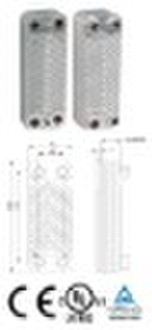Catalog
-
Catalog
- Agriculture
- Apparel
- Automobiles & Motorcycles
- Beauty & Personal Care
- Business Services
- Chemicals
- Construction & Real Estate
- Consumer Electronics
- Electrical Equipment & Supplies
- Electronic Components & Supplies
- Energy
- Environment
- Excess Inventory
- Fashion Accessories
- Food & Beverage
- Furniture
- Gifts & Crafts
- Hardware
- Health & Medical
- Home & Garden
- Home Appliances
- Lights & Lighting
- Luggage, Bags & Cases
- Machinery, Hardware & Tools
- Measurement & Analysis Instruments
- Mechanical Parts & Fabrication Services
- Minerals & Metallurgy
- Office & School Supplies
- Packaging & Printing
- Rubber & Plastics
- Security & Protection
- Service Equipment
- Shoes & Accessories
- Sports & Entertainment
- Telecommunications
- Textiles & Leather Products
- Timepieces, Jewelry, Eyewear
- Tools
- Toys & Hobbies
- Transportation
Filters
Search
Evaporator
original price: 10,00 USD
Ningbo, China
Production capacity:
500 Piece / Year

Jason Zhuo
Contact person
Basic Information
| Place of Origin | Zhejiang China (Mainland) |
|---|---|
| Brand Name | Hrale |
| Model Number | B3-14C |
| Type | Evaporator |
| Application | Heater Parts |
| Certification | CE |
Technical parameterProduct nameCondenser, Evaporator, SubcoolerProduct modelB3-14CUnit heat exchanging area0.014m2Maximum flowrate4m3/hPlate material316L or 304 stainless steelWelding material99.9% copperThickness of plate0.3mmVolume per channel0.022L/ each channelMaximum number of plate 60Design pressure1.0MPa 3.0MPa Test pressure2.0MPa 4.5MPaDesign temperature-195 +220 Connectionsthe biggest screw thread pipe for water: 3/4", the biggest welded pipe for other fluid: 7/8" Capacity1-6KWBasic flow dispositionF1-> F3F4-> F2 Application scopeThe wall heater, heats the water heater, the cold temperature testequipment, the small refrigeration equipment and so on How Heat Transfer WorksHeat transfer occurs when there is a difference in temperature between two mediums. Heat will travel from the hot source to the cold source. The rate at which the heat transfer occurs at is determined by many factors such as the heat conductivity of the two materials andthe difference in temperatures of the two mediums. Convectiuve heat transfer occurs when the materials are moving against each other. Plate heat exchangers have significantly good heat transfer rates because they use metal plates which have high heat conductivity rates and the plates are extremely thin. The plate heat exchangers also achieve high amounts of heat transfer through convective forces with both working fluids. With large temperature differentials, great amounts of heat transfer can be achieved using a plate heat exchanger. CorrosionCorrosion is usually how these units will fail. Use fluids with reasonable pH levels to ensure a long lasting life. Hard water will corrode faster than regular water. (Use distilled if possible; Distilled should never corrode it) Salt water will corrode stainless steel very fast. It is recommended to clean the exchanger often if you are using corrosive fluids. Normal usage (non-corrosive fluids) should expect 10-20 years of life. Fluids containing chlorides will corrode the unit quickly. ApplicationsThis is an extremely popular unit for wood burning furnaces, radiant floor systems, refrigerant systems, straight vegetable oil conversions, beer chilling, air conditioning system and solar water heating systems. It will work for any application in which the desired result is for two fluids (liquid or gas) to exchange heat. How it WorksFluid A passes from the port on the left of the heat exchanger through every other channel created by the plates to the opposite end port on the left of the heat exchanger (looking at it the long way). Fluid B passes from the port on the right through the other channels created by the plates and comes out the other port on the right side. The fluids are essentially touching each other through the plates and heat is transferred from the hot fluid to the cold fluid. (but the fluids do not mix)
Delivery terms and packaging
Packaging Detail: paper carton, metal pallet Delivery Detail: 2 weeks
Port: NINGBO, CHINA
Payment term
Letter of credit
Telegraphic transfer
-
Payment Methods
We accept:









